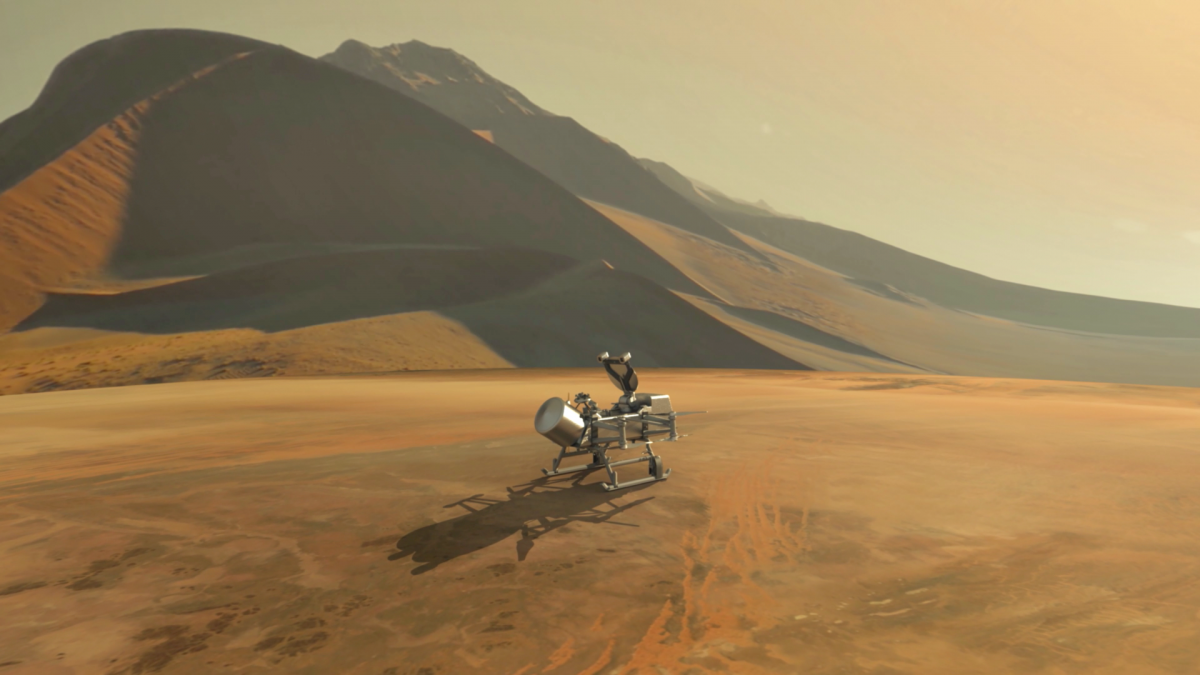Nasa’s Dragonfly mission to Saturn’s mysterious moon Titan may finally reveal signs of alien life
Titan has been described as an ‘explorer’s utopia’, with the possibility that water-based lifeforms could survive in its lakes

The secrets on the surface of Saturn’s moon Titan will soon be revealed by Nasa’s Dragonfly mission, which astronomers have described as an “explorer’s utopia”.
The main goals for the mission, which will launch in the mid-2030s, will be to search for chemical biosignatures, investigating its methane cycle, and looking into the prebiotic chemistry that happens both on its surface and in its atmosphere.
Titan is the only moon with a substantial atmosphere and liquid on its surface – although unlike the Dihydrogen monoxide (water) on Earth, it rains methane.
Nevertheless, it is possible that Titan could sustain some form of life, and scientists will be looking for past and present lifeforms that could use liquid hydrocarbons as a solvent (a substance that dissolves another to form a solution, in the same way that water dissolves sugar).
“Titan represents an explorer’s utopia,” said Alex Hayes, associate professor of astronomy in the College of Arts and Sciences and co-author of ‘Science Goals and Objectives for the Dragonfly Titan Rotorcraft Relocatable Lander’ which was published by Dragonfly’s science team in July.
“The science questions we have for Titan are very broad because we don’t know much about what is actually going on at the surface yet. For every question we answered during the Cassini mission’s exploration of Titan from Saturn orbit, we gained 10 new ones.”
Cassini, which orbited Saturn and for 13 years and discovered seven new moons – as well as the watery ocean beneath one of those moons, Enceladus – failed to identify information on Titan’s surface due to the thick methane atmosphere, which is four times denser than Earth’s.
However Earth-like morphological structures exist on the planet, such as dunes, lakes, and mountains; there was just not enough data to reveal their composition.
“At the time Cassini was launched we didn’t even know if the surface of Titan was a global liquid ocean of methane and ethane, or a solid surface of water ice and solid organics,” said Hayes.
Dragonfly will spend a full Titan day (16 Earth days) in one location conducting experiments and observations before moving to a new location, with the team deciding the actions of the spacecraft based on data gathered from the current location – a tactic developed over decades through the exploration of Mars. Titan’s gravity is approximately one-seventh that of Earth, and its dense atmosphere with light winds makes it ideal for an air-based craft.
Join our commenting forum
Join thought-provoking conversations, follow other Independent readers and see their replies
Comments